‘Shogun’ Is Over, But What About Season 2? Creators Justin Marks and Rachel Kondo Weigh In
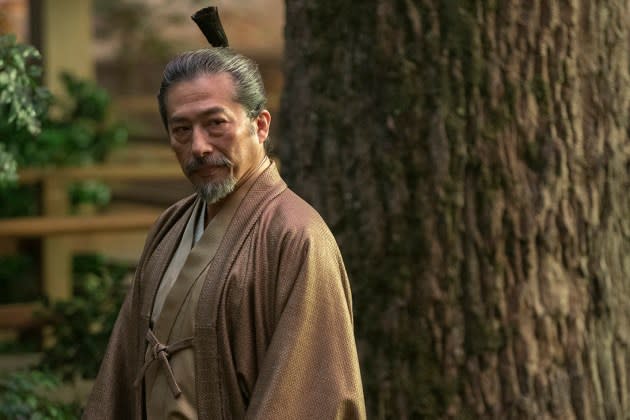
[This story contains major spoilers from the season finale of FX’s Shogun.]
Shōgun masterminds Justin Marks and Rachel Kondo read James Clavell’s novel cover to cover. Their social media intake around the series, however, has not been quite as comprehensive.
More from The Hollywood Reporter
“We live in Hawaii on the island of Maui with 70 chickens and roosters,” Marks tells The Hollywood Reporter. “And none of the chickens on our property have seen Shōgun, to our knowledge. So it’s been pretty quiet.”
“It’s not that quiet,” Kondo corrects, “but they’re not talking about Shōgun.”
Marks and Kondo’s chickens are just about the only ones not talking about Shōgun. The FX series has drawn to a close, and all season long, it’s been an internet darling, with incredible memes born out of the incredible show.
For instance, there’s an image floating around at the moment featuring Cosmo Jarvis and Anna Sawai as John Blackthorne and Lady Mariko, two of the key protagonists in Shōgun. The meme features Blackthorne (aka “The Anjin”) ranting about something in colorful language, followed by Mariko providing a delicate, simpler translation of his barbaric words. An example might go something like this:
BLACKTHORNE: “How dare you bastards tell me Shōgun is ending for good! I don’t care if you’ve exhausted the source material, I don’t care that you have already adapted the entirety of James Clavell’s book! There’s nothing else on television quite like this program and I demand you monsters continue it at once!”
MARIKO: “The Anjin wants a second season of Shōgun.”
Hopefully, you get the idea. And, all of what this theoretical Blackthorne quote says is true.
Billed as a limited series, Shōgun is done, at least as far as Clavell’s original novel is concerned. It’s also true that there’s nothing on TV that quite compares to the thrill of watching FX’s high-budget event series week in and week out, led in front of and behind the camera by star-producer Hiroyuki Sanada. Early comparisons along the lines of “Game of Thrones and Succession but make it feudal Japan” aside, the story of Shōgun unfolds like one of the heart-wrenching poems the late Mariko (who died in the shocking penultimate episode) would utter in a touching meeting with her lord Toranaga (Sanada).
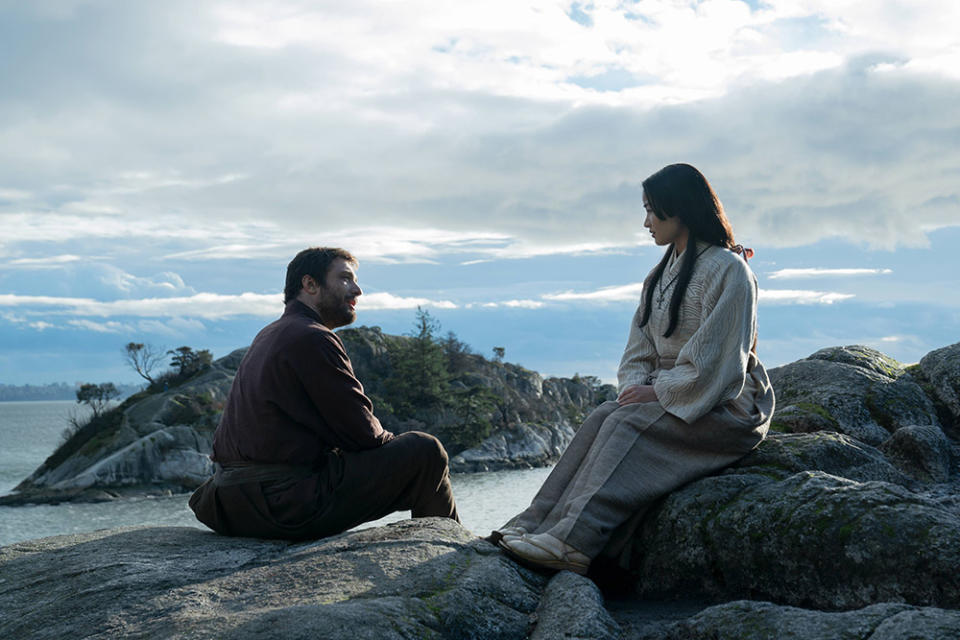
As it currently stands, Shōgun ends with a complete enough arc: Toranaga’s clandestine Crimson Sky plot was executed perfectly by Mariko, who sacrificed her own life in explosive fashion, becoming something of a martyr that upends the power-hungry Lord Ishido’s plans to solidify his reign over Japan. The aforementioned “anjin” John Blackthorne remains in Japan to help build ships for Toranaga, whose destiny as the new shogun is all but assured due to Mariko’s actions.
The episode features Blackthorne dreaming about growing old back home in England. Though in reality, he’s fated to remain in “The Japans” forever. Indeed, Clavell’s other books in “The Asian Saga,” a series of novels based around the continent with at least minor ties to Shōgun, strongly suggest the Anjin does in fact live out his days far away from his homeland. There are six novels in The Asian Saga that travel far from the shores of Japan to Hong Kong, Singapore and Iran. Could these stories provide a template for future seasons presented under the Shōgun banner? Or, is it enough that the actual parallel history of Japan is ripe for adaptation?
“No one knows what’s going to happen next,” actor-producer Sanada told THR earlier in the season. “But we have history, real history models, and clearly, we know what happened. So, yeah. It all depends on the audience’s reaction.”
Well, the audience’s reaction is quite clear now. Whether Marks and Kondo see a future or not? Well, THR certainly asked the married colleagues that question and many more below, in what stands for now as a postmortem on the Shōgun series finale.

Shōgun struck a chord with viewers. What was it about the show, or even the modern TV moment, that made it stand out from the very crowded pack?
JUSTIN MARKS For me, it’s the book. We talk about great stories being timeless, and I think Shōgun as a book is a perfect example of that. It bears the cultural cobwebs on anything that’s 50 years old, and you take that for what it is. And yet there is a core truth to the characters and the story and the setting that we as storytellers forget too often these days: you just need a great story that you really can’t put down, which is the effect of reading the book. When we see that, we wrap our arms around it as an audience. I’m speaking for myself as an audience member, and Succession is a great example of this, too, where you just wanted to feel like that there’s something that takes me away to a place that I’ve never been, and shows me characters who feel like they really exist and that they’ll surprise me. This is everything that James Clavell does in Shōgun. So we were just trying not to drop that baton.
RACHEL KONDO It took us five years to bring this to fruition and double that amount of time for FX. But I feel like maybe the reason why it might be scratching at some itch today is because it’s as if we took something from each of those years and drew out something from pre-pandemic, pandemic and whatever the next experience was. Five years is a long time. And it was a privilege to have had that time, and we were able to take our time. And I think that each of us grew so much within the five years, and some of us aged tremendously within those five years. And I think that every single person who worked on this poured that growth and that experience of time and storytelling into the show. And maybe that’s an abstract way of thinking about it, but I feel like that accumulates and it ends up saying something about time and experience.
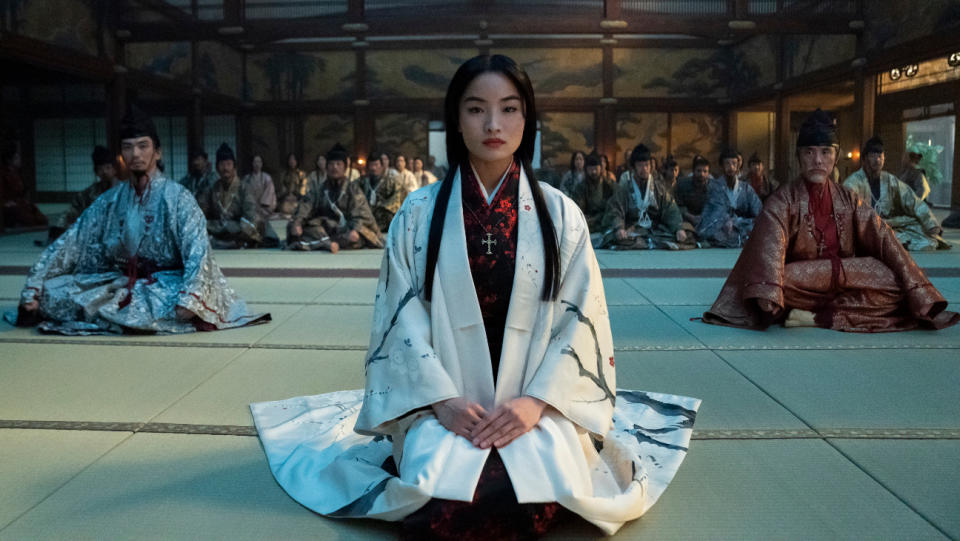
I’m curious about what it was like for you when you were encountering some of Shōgun‘s biggest moments for the first time as a reader. For example, Mariko’s death. Do you remember where you were when you first read that part of the book?
KONDO I do. I’m going to act it out for you. Reading, reading, reading, reading, reading… (Mimics her head exploding.) And then I had to take a break from reading for a day because I went through the five stages of grief. Because then I was like, “oh, well, obviously she comes back as a ghost,” and then you’re reading on, because you’re like, “well, she’s coming back” … all this denial. Denial and eventually acceptance, because you understand what she gave her life for. But I remember slamming that book closed being like, “Nope, not happening.”
MARKS I was 80 pages ahead of her at that point in reading. And so I was just sitting, waiting. I knew where she would be, and I quietly read that, and then I just sat at the dining room table waiting for Rachel to come into the room. And as soon as she stepped into the doorway, I knew on her face what had happened.
KONDO And he handed me a bottle of wine. By the time anyone reads this, it’ll be out there. But it’ll be really interesting to see [reactions to Mariko’s death]. If people reacted how we did when we read that section, there should be riots in the streets over what Clavell did. But also what a beautiful way to make a statement of everything that Mariko had been denied all her life. She lived for something and she died for something. But more importantly, I don’t think Mariko was particularly fixated on death. I think she just wanted to live for something. And in her death, she finally got that, and that’s triumph. There’s a real magic to that. It was the moment when we knew we had to adapt this, which I’ve said 11 times over the course of unpacking the show! But it was definitely the moment that sealed it for me, her death.
It must have been a huge conversation, understanding how much her death in the book devastated you, knowing you had to be extremely calculated about how you do that same thing to the audience.
MARKS A lot of liberties are taken in the last four episodes, although nine is pretty loyal to the book. But really the episodes six, seven, eight and 10 required a lot of changes. Sometimes we felt like we were the book’s therapists figuring out what it meant to say and sort of finding a way to make it efficient and economic in the space of television. That was our big job. But I think the biggest challenge of Mariko’s death at the end of nine is the feeling I hope that the audience has, that we had as readers: “How is this going to lead to victory? How are they going to pull their way out of this one? There’s one episode left. How does this work? How does this feel like a happy ending?” And so much of Toranaga’s plan and James Clavell’s plotting, it’s like building a ship in a bottle and it just looks like a mess and chaos. And you’re just like, “oh, well, this is not going to be a happy ending.” And then episode 10 just elegantly pulls one string, and by that I mean James Clavell’s plotting, and all of a sudden it stands up and you’re like, “oh, it was being built this whole time and we’re just not paying attention.”
KONDO Well, we are, but we don’t really have the eyes to see it yet.
MARKS There’s that great moment in Zoolander where he says, “But why male models?” And then they explain the plan, and then after they explain the plan, he’s like, “But why male models?” I just explained it to you! You just saw the whole thing happen! It’s how I felt so often when I was reading the book, because until you really understand how this world works and how Toranaga works, you don’t see how victory has been achieved because it’s bigger than the scale of all of our lives.
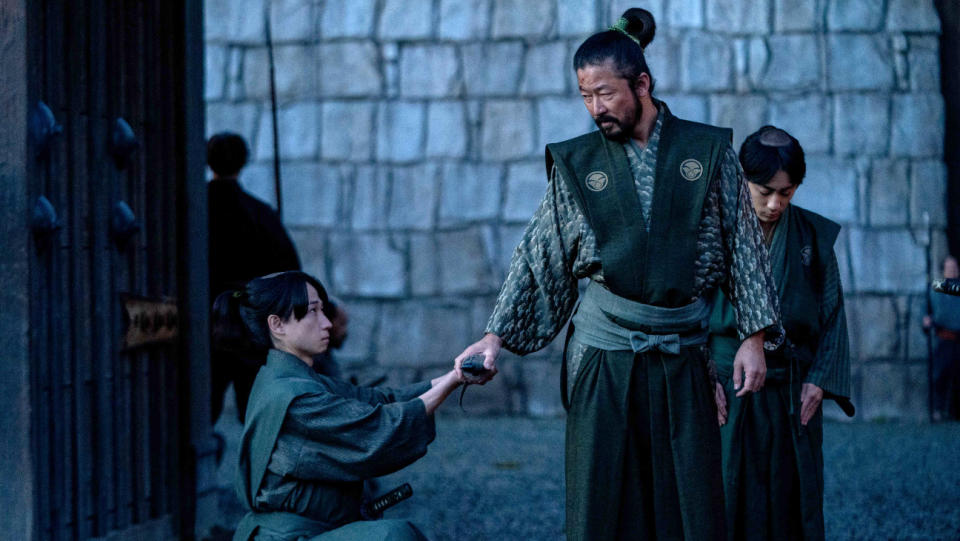
You use Yabushige (Tadanobu Asano) as a character who asks Toranaga to basically explain the plot. Does that make him the Derek Zoolander of Shōgun?
MARKS Kind of! (Laughs.) That scene… you tell a dead man the future, to quote Rachel. And we knew that the only way to get to Toranaga’s inner monologue was to sort of whisper it into a well, so to speak. And what better well to whisper to than a man who was on the threshold of death? In some ways, Yabushige is the audience, and he is always the audience because he feels like he’s always craving that information and he’s smart enough to understand how the world works. But he’s also kind of just someone who lives for today and always lives for today.
KONDO But he is also flopping around, a carp in the pond. And that felt very much like us, trying to figure out how to tell the story, grabbing at an invisible fish at a certain point when trying to understand where we’d been led.
Can you explain the opening scene of the finale, the dramatization of Blackthorne dreaming about a possible future?
MARKS Well, for Blackthorne, it’s the dream of a dream that he witnesses in the beginning that you think is suddenly us trying to frame the episode as if it were an old man looking back on his life filled with regret only to come to this precipice moment for Blackthorne, which [happened earlier] in the book, of him promising to commit seppuku. And we moved it to the end of the story, because we felt that that was the best tribute to Clavell and to the character to do it that way.
KONDO And I think when he offers to second Mariko, this is the one thing he does not want to do, but he wants to stand for something, meaning he wants to support her. So I think that that’s his first initial rush with it.
MARKS At the end, it is really this moment where you realize it’s not the story of an old man looking back filled with regret. But a young man looking forward, seeing that path and killing that self in that moment and choosing this path, whatever it may bring.
Toranaga tells Yabushige what’s going to happen in the future. We see a hazy version of a final battle, but we’re denied the actual battle. Was that a difficult decision at all?
MARKS I think the book denies us this, too. And that’s what I really appreciate about the book is that you really, even turning the last page, you’re like, but what about…? And you realize it doesn’t matter if you’ve really understood what this story is trying to be. Never for a second in the writer’s room did we ever really say that we were after [a final battle]. Not because we couldn’t afford it — although we couldn’t. But because Clavell was not telling that kind of story.
KONDO It’s that line from Toranaga: “Why is it always that the people who are so eager to go into battle are the ones who have never been in it?”
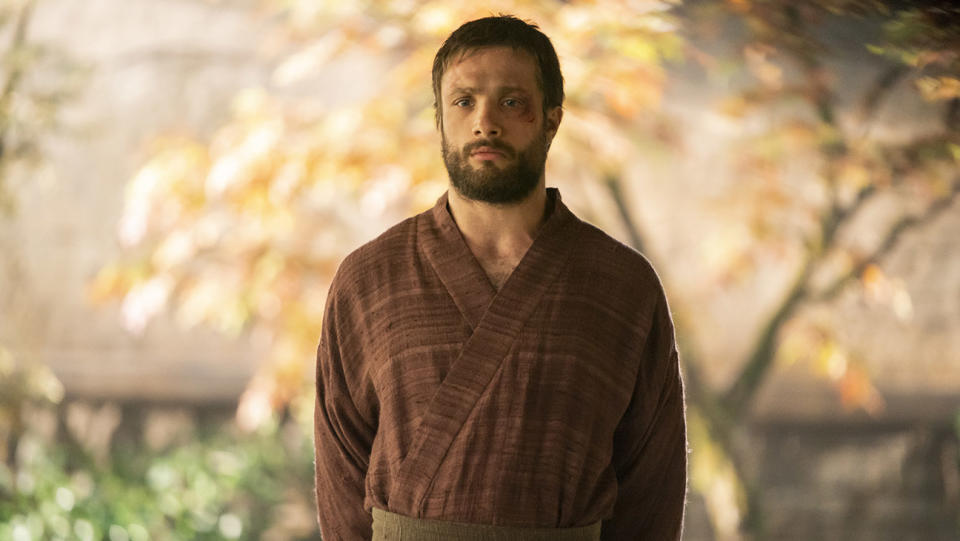
Here’s the inevitable season two question. Is it going to happen?
MARKS I don’t know. I keep saying it’s like we want to let everyone be on the same page when it comes to the book. And hopefully now the TV audience and the book audience are on the same page with what the story is and where it resolves. I think if we had a story, if we could find a story, we would be open to it. But I don’t think that anyone ever wants to be out over their skis without a roadmap and everything. And it’s also just about, do people want more of it?
Yes. The answer is yes.
MARKS But it’s also about, not even topping the book, but, how do you even equal the roadmap that Clavell laid out? And I don’t know if it’s possible. I don’t know if Clavell could have done it either. That’s probably why he moved on to other books too, right? He knew what he had done. Yeah, it’s a tough one.
Would you be interested in any of his other books in The Asian Saga that you could put under the Shōgun billing?
MARK: Oh, gosh. Well, I can only speak for myself reading Tai-Pan right now, just apropos of nothing, honestly, and what a great book. I’ve been telling Rachel about it as I’ve been reading it and saying, “Well! He did it again.” But it’s completely different. It’s about Hong Kong in the early days, a totally different world, so it’s not just playing the hits. He’s conjuring new vivid characters that stand 75,000 feet tall all at once. And I think when you look at Shōgun, that’s part of what Clavell did. We were given these characters who were really so colorful and accessible, which is a hard magic to conjure as a novelist and as a writer.
I’ll just say, between Fargo and American Horror Story, FX has a proven track record with anthology series.
MARKS Yeah. But it’s tough because Fargo, you’re still telling different threads of the same place, whereas The Asian Saga goes all over the place for good reason. So it’s hard. You’re not actually building off that same language in the same way.
When I asked Hiro about more Shogun, he seemed open to it.
KONDO Have you spoken to Cosmo?
No, I would love to.
KONDO Somebody asked him [about a second season] and he was trying to figure out how to word what he was going to say. And then all of a sudden, he said something about how as he was doing this show, he became a student of Japanese history, and there is a lot of it. And that was his answer.
That’s basically what Hiro said! It’s a good answer.
KONDO It is a good answer.
Shōgun is now streaming on Hulu. Read THR‘s finale postmortem with star-producer Hiroyuki Sanada.
Best of The Hollywood Reporter
